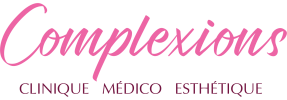Skin Rejuvenation Techniques
Introduction
Skin rejuvenation techniques have become increasingly popular in the world of medical aesthetics, offering solutions to common skin concerns such as wrinkles, pigmentation, scars, and loss of elasticity. These treatments aim to restore a youthful appearance, improve skin texture, and address various signs of aging. With a variety of options available, it’s essential to understand the different techniques, how they work, and what results they can deliver. This comprehensive guide delves into the most effective skin rejuvenation techniques, their benefits, risks, and how to choose the right one for your needs.
Understanding Skin Aging
Before exploring the various skin rejuvenation techniques, it’s important to understand the aging process and how it affects the skin. As we age, our skin undergoes several changes:
- Collagen and Elastin Depletion: Collagen and elastin are proteins that keep the skin firm and elastic. Over time, their production decreases, leading to sagging and the formation of wrinkles.
- Loss of Volume: The fat pads beneath the skin diminish with age, leading to a hollow or sunken appearance, particularly around the eyes and cheeks.
- Decreased Cell Turnover: The rate at which skin cells regenerate slows down, resulting in a dull, uneven complexion and slower healing from damage.
- Environmental Damage: Exposure to the sun, pollution, and lifestyle factors such as smoking can accelerate skin aging, causing pigmentation issues, rough texture, and other visible signs of damage.
Skin rejuvenation techniques are designed to combat these effects, revitalizing the skin and restoring its youthful appearance.
Popular Skin Rejuvenation Techniques
1. Chemical Peels
Chemical peels involve the application of a chemical solution to the skin, which causes the top layers to exfoliate and peel off. This process reveals fresher, smoother skin beneath and stimulates the production of new skin cells.
Types of Chemical Peels
- Superficial Peels: These are mild peels that use alpha-hydroxy acids (AHAs) like glycolic acid to exfoliate the outermost layer of the skin. They are ideal for treating minor skin issues like dullness and uneven texture.
- Medium Peels: Medium-depth peels use stronger acids, such as trichloroacetic acid (TCA), to penetrate deeper into the skin. They are effective for treating sun damage, fine lines, and pigmentation issues.
- Deep Peels: Deep peels use potent acids like phenol to penetrate several layers of the skin. They offer dramatic results but require significant downtime and carry a higher risk of complications.
Benefits
- Improved skin texture and tone.
- Reduction in fine lines and wrinkles.
- Enhanced skin brightness and clarity.
Risks
- Redness, swelling, and peeling.
- Risk of hyperpigmentation or scarring, especially with deeper peels.
- Sensitivity to sunlight post-treatment.
2. Laser Skin Resurfacing
Laser skin resurfacing uses concentrated beams of light to remove damaged skin cells and stimulate the production of new collagen. This treatment is highly effective for addressing various skin concerns, from wrinkles to acne scars.
Types of Laser Resurfacing
- Ablative Lasers: These lasers remove the outer layers of the skin and are effective for treating deep wrinkles, scars, and severe sun damage. CO2 and erbium lasers are common types of ablative lasers.
- Non-Ablative Lasers: Non-ablative lasers work by heating the underlying skin tissue without removing the outer layers. They are less invasive and have a shorter recovery period but may require multiple sessions to achieve the desired results.
Benefits
- Significant reduction in wrinkles, scars, and hyperpigmentation.
- Skin tightening and improved texture.
- Long-lasting results, especially with ablative lasers.
Risks
- Redness, swelling, and sensitivity to sunlight.
- Possible scarring or hyperpigmentation, particularly in darker skin tones.
- Prolonged downtime with ablative lasers.
3. Microneedling
Microneedling, also known as collagen induction therapy, involves using a device with fine needles to create tiny punctures in the skin. These micro-injuries trigger the body’s natural healing process, leading to the production of new collagen and elastin.
Benefits
- Effective for reducing fine lines, wrinkles, and acne scars.
- Improves skin texture and tone.
- Enhances the absorption of skincare products.
Risks
- Temporary redness, swelling, and sensitivity.
- Risk of infection if not performed in a sterile environment.
- Possible bruising or minor bleeding.
4. Radiofrequency (RF) Treatments
Radiofrequency treatments use energy waves to heat the deep layers of the skin, stimulating collagen production and tightening the skin. RF treatments are non-invasive and can be combined with other procedures, such as microneedling, for enhanced results.
Benefits
- Skin tightening and wrinkle reduction.
- Improvement in skin texture and tone.
- Non-invasive with minimal downtime.
Risks
- Mild redness and swelling.
- Possible discomfort during treatment.
- Results may vary depending on skin type and condition.
5. Intense Pulsed Light (IPL) Therapy
Intense Pulsed Light (IPL) therapy uses broad-spectrum light to target pigmentation issues, such as sunspots, freckles, and broken capillaries. Unlike lasers, which use a single wavelength of light, IPL emits multiple wavelengths, making it versatile for treating various skin concerns.
Benefits
- Reduction in pigmentation and redness.
- Improved skin tone and texture.
- Minimal downtime with gradual improvement over multiple sessions.
Risks
- Temporary redness, swelling, and darkening of treated spots.
- Risk of hyperpigmentation in darker skin tones.
- Multiple sessions may be required for optimal results.
6. Dermal Fillers
While dermal fillers are primarily known for adding volume to areas like the lips and cheeks, they can also play a role in skin rejuvenation. By filling in wrinkles and folds, dermal fillers provide immediate smoothing effects and contribute to a more youthful appearance.
Types of Fillers
- Hyaluronic Acid Fillers: The most common type, these fillers hydrate and add volume to the skin.
- Calcium Hydroxylapatite Fillers: These fillers stimulate collagen production and provide longer-lasting results.
- Poly-L-lactic Acid Fillers: These fillers gradually stimulate collagen production, leading to longer-term improvements in skin texture and firmness.
Benefits
- Immediate results with minimal downtime.
- Versatile treatment for various facial areas.
- Can be combined with other rejuvenation techniques for comprehensive results.
Risks
- Temporary swelling, redness, and bruising.
- Risk of lumps, asymmetry, or overcorrection if not done properly.
- Allergic reactions or infections, though rare.
How to Choose the Right Skin Rejuvenation Technique
Assessing Your Skin Concerns
The first step in choosing the right skin rejuvenation technique is to assess your specific skin concerns. Are you looking to reduce fine lines and wrinkles, improve skin texture, or address pigmentation issues? Different treatments are better suited for different concerns, so it’s important to understand your goals.
Consulting with a Qualified Practitioner
A consultation with a board-certified dermatologist, plastic surgeon, or aesthetic physician is essential for determining the most appropriate treatment for your skin type and concerns. During this consultation, the practitioner will assess your skin, discuss your goals, and recommend a personalized treatment plan.
Considering Recovery Time
Some skin rejuvenation techniques, such as deep chemical peels or ablative laser resurfacing, require significant downtime, while others, like microneedling or RF treatments, involve minimal recovery time. Consider your lifestyle and how much downtime you can accommodate when choosing a treatment.
Evaluating the Cost
Skin rejuvenation treatments vary widely in cost. More advanced procedures like laser resurfacing or a series of RF treatments can be more expensive, while chemical peels and microneedling might be more affordable. It’s important to weigh the cost against the potential benefits and longevity of the results.
Long-Term Maintenance
Some treatments offer long-lasting results, while others may require maintenance sessions to sustain the desired effects. Discuss the expected longevity of the results with your practitioner and consider how often you’re willing to undergo treatment.
Skin rejuvenation techniques like chemical peels and microneedling are powerful tools in your skincare arsenal. To ensure these treatments are performed safely, check out our guide on How to Evaluate a Clinic’s Reputation.
Conclusion
Skin rejuvenation techniques offer a range of options for those looking to enhance their complexion, combat the signs of aging, and achieve a more youthful, radiant appearance. From chemical peels and laser resurfacing to microneedling and RF treatments, there is a method suitable for nearly every skin type and concern.
Choosing the right technique depends on your specific skin concerns, goals, and lifestyle. By consulting with a qualified practitioner and understanding the benefits, risks, and expected outcomes of each treatment, you can make an informed decision that will help you achieve your desired results.
In the end, the key to successful skin rejuvenation is not just the treatment itself, but also the care you take in maintaining your skin’s health before and after the procedure. With the right approach, skin rejuvenation techniques can help you maintain a healthy, glowing complexion for years to come, allowing you to look and feel your best at any age.

